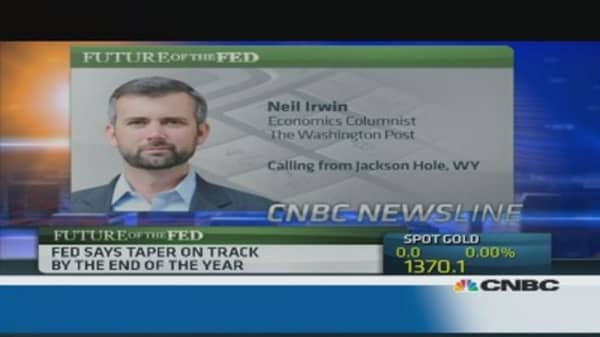JACKSON HOLE, WY—The absence of Ben Bernanke from the Fed's annual economic retreat here looms almost as large as the surrounding Grand Teton mountains that frame the meeting.
Not only is the chairman's absence a break with a 25-year tradition, but it comes at a time when markets crave the kind of clarity on the direction of monetary policy that only the head of the Fed can deliver.
The minutes of the Fed's July meeting, released Wednesday, show a divided Fed with some officials believing the central bank should be patient before reducing the amount of stimulus in the economy, while others appearing ready to act very soon.
A surging 10-year yield, nearing 3 percent, adds to the uncertainty and suggests that the Fed is losing control of the long-end of the bond market. Meanwhile stocks have given up a significant portion of their gains amid concern over the outlook for earnings, growth and monetary policy.
(Read more: Cauldron of hawks emerges on Fed policy committee)





